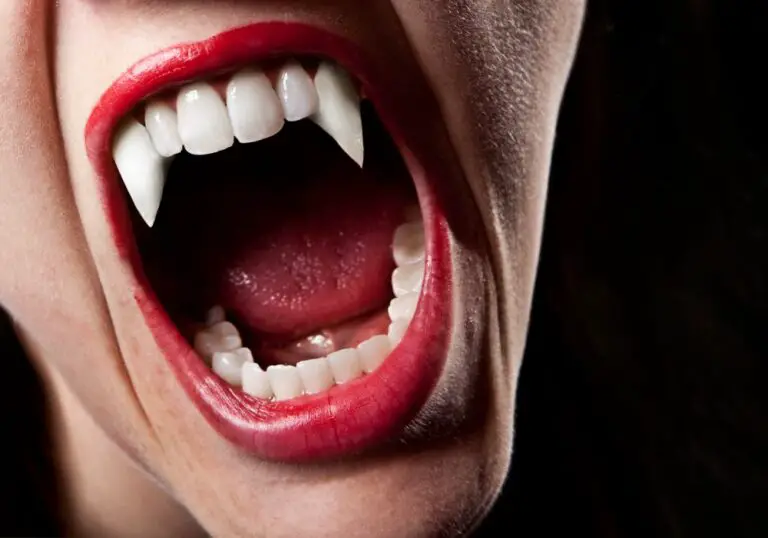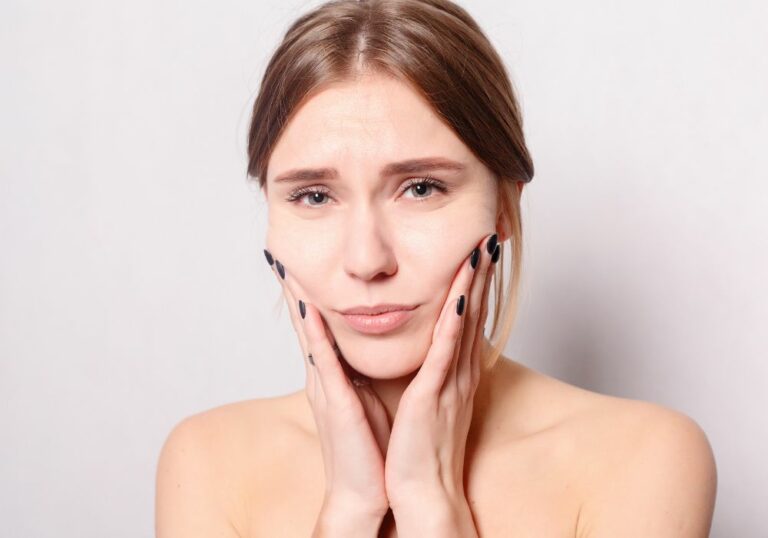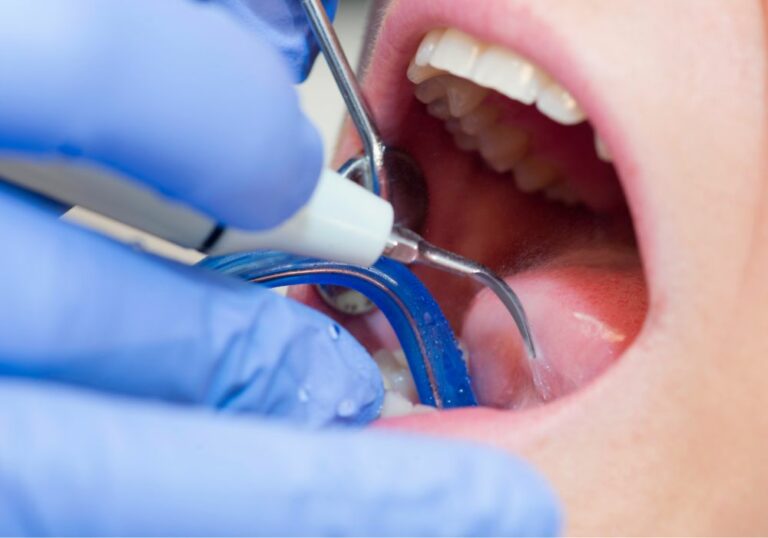You glance in the mirror and notice dark spots between your teeth that weren’t there before. You try brushing and flossing to remove them, but the black stains persist. This sight can certainly cause alarm, leaving you wondering what causes these stains and if they indicate a serious dental problem.
Seeing black, gray or brown discoloration between teeth is fairly common. While unsightly, these stains are not necessarily a sign of anything sinister. Oftentimes, harmless foods, drinks or habits end up depositing pigment in between teeth that can be remedied.
However, dark spaces between teeth can also hint at poor oral hygiene, dental work issues or other problems. Determining the cause of tooth discoloration and acting promptly leads to the best outcome.
Understanding potential reasons for black spots between teeth allows you to take steps to resolve them. Learning prevention also helps keep your smile stain-free going forward. With the right information and dental care, you can feel confident showing off clean, bright teeth.
The causes of black stains between teeth
Discoloration between teeth can come from a variety of sources. Understanding what leads to black stains in these areas is key to removing and preventing them.
1. Foods and drinks
Some of the most common black stains form from pigmented foods and beverages that seep into the microscopic grooves of your enamel. Coffee, tea, red wine, and dark berries are frequent culprits.
The tannins and other compounds that give these foods their dark colors can easily adhere to tooth surfaces. Sipping slowly or using a straw can reduce contact time with teeth. However, the pigments may still find their way into tiny crevices between teeth.
Frequent snacking on other foods like ketchup, soy sauce and curries can also introduce staining. The longer teeth are exposed to pigments, the deeper stains set in. Controlling intake frequency is important.
2. Tobacco use
Smoking cigarettes and chewing tobacco are known to cause severe, persistent stains. The tar and nicotine penetrate the enamel pores, leaving yellow or brown buildup behind.
This discoloration often appears heaviest along the gumline and in between teeth that the tobacco pressed against regularly. The stains may appear darker as they mix with plaque buildup.
Quitting smoking and chewing tobacco can help reverse this damage over time. But stains may never fully lift without professional help.
3. Poor oral hygiene
Infrequent and inadequate brushing and flossing allows plaque to thrive on your teeth. This sticky film of bacteria naturally forms on teeth every day. But when it’s not removed effectively, it hardens into tartar that appears yellowish or black.
Tartar is bonded strongly to teeth, enabling it to trap stains easily. The longer it builds up between teeth, the darker it becomes. Improving your oral hygiene habits is critical to preventing plaque from calcifying into tartar.
4. Medications
Certain prescription medications can alter the color of developing teeth in children if taken while teeth are still forming. Tetracycline is an antibiotic that frequently causes intrinsic gray, brown or black staining of teeth. The bands of discoloration form deep within the tooth layers.
Other drugs like antihistamines, high blood pressure medications, and anti-cancer drugs have also been associated with dental staining. Always notify your dentist about any medications to identify potential oral side effects.
5. Dental work
Over time, silver amalgam fillings used to treat cavities can cause grayish discoloration along the edges near the gumline. The metallic compounds interact with saliva and food to create a darkened appearance.
Crowns and bonding made of resin materials can also pick up stains more readily than natural enamel, especially at the gumline. Your dentist may need to replace dental work that is contributing to staining issues.
Signs of tooth decay versus harmless stains
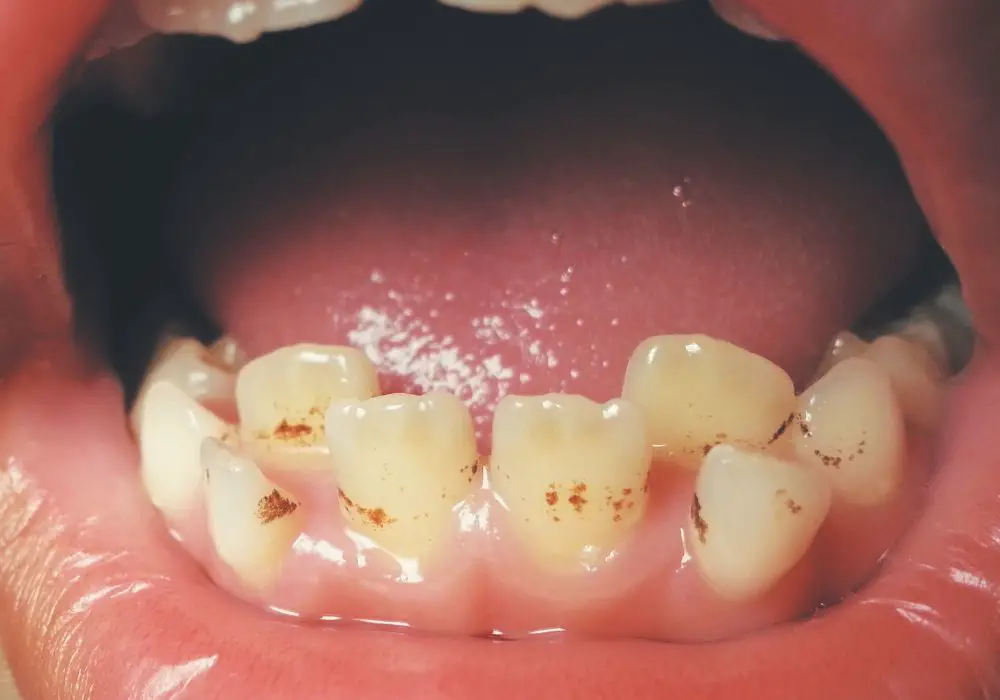
Seeing black between your teeth understandably raises concerns about tooth decay. However, dark spots in these areas are not necessarily indicative of cavities and advanced dental disease.
Tooth decay shows up in specific patterns:
- White, brown or black spots appear directly on the hard enamel surface of the tooth. These represent demineralization of enamel from acid attack.
- Decay spots often start at the gumline, spreading upward on the tooth crown in an uneven pattern.
- Pain and sensitivity are symptoms of advanced decay penetrating the inner dentin layer.
In contrast, black stains between teeth are often harmless pigments sitting only on the enamel surface. They occur from external sources like food rather than internal erosion from bacteria. The stains do not penetrate into the tooth or cause structural damage.
However, heavy tartar buildup between teeth can indicate a highly acidic environment. Letting plaque stagnate can potentially lead to decay over time. When in doubt, share your concerns with your dentist to rule out true decay.
Professional teeth cleaning for stain removal
While maintaining your own oral hygiene is important, a professional teeth cleaning is critical every 6 months. Your dentist or hygienist will remove hardened tartar that you simply can’t brush or floss away on your own.
During the cleaning, they will scrape and polish all surfaces of your teeth, paying special care to spaces between teeth and just below the gumline. This removes external stains you may be scrubbing at in vain at home.
A professional cleaning also gives the hygienist a chance to spot potential issues like cavities or gum disease. Providing this preventative care helps halt any problems in their early stages before they worsen.
Ask your dentist which stain removal techniques they offer if you have noticeable dark spots between teeth. Oxygenating compounds and enamel polishers can further brighten your smile.
Over-the-counter whitening products
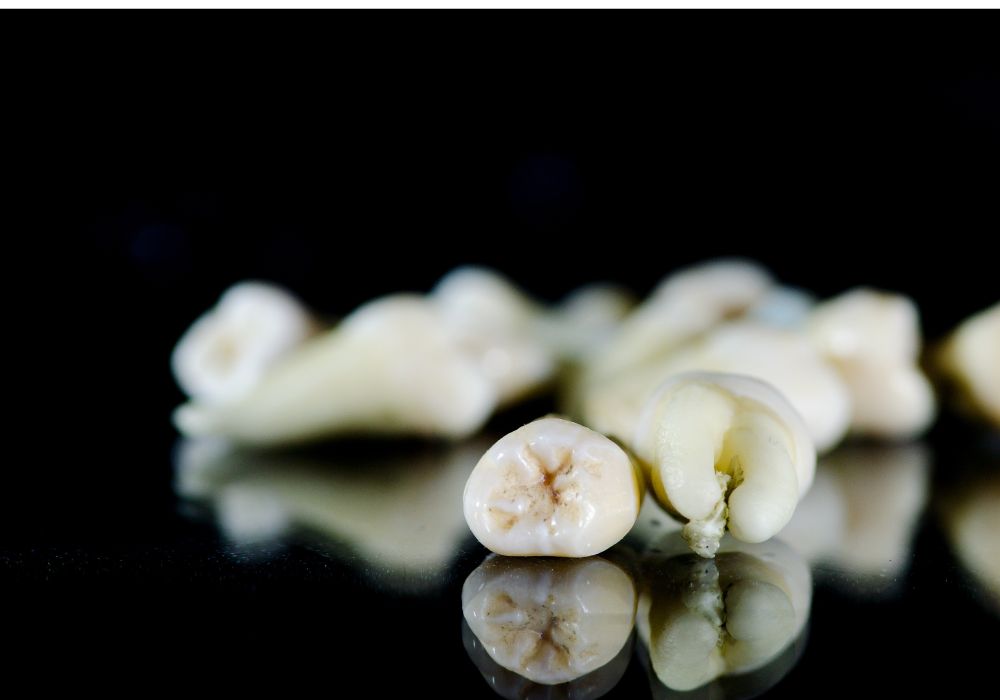
Special whitening toothpastes, rinses and strips you can buy at the drugstore help lift stubborn stains from teeth. Look for the following active ingredients:
- Silica: This fine abrasive powder helps scrub stains away to polish teeth. Some brands use hydrated silica for milder abrasion.
- Baking soda: Also an abrasive, sodium bicarbonate lifts surface stains and neutralizes acidity from plaque bacteria.
- Hydrogen peroxide: Found in whitening strips, trays and some toothpastes, peroxide bleaches teeth by penetrating the enamel. Results occur gradually over days of use.
- Sodium hexametaphosphate: This compound prevents dissolved pigments from redepositing on teeth. It keeps stains from resettling after other ingredients lift them away.
While whitening toothpastes are generally safe, discontinue use if they irritate your gums or make teeth sensitive. Whitening gels should not touch the gums, as the peroxide can burn soft tissues.
When to consider in-office whitening?
For patients who want dramatic stain removal in a single visit, in-office whitening is an option. This intensive procedure is performed chairside at the dental office.
First, gums are protected with a rubber dam or protective gel. High-concentration hydrogen or carbamide peroxide gel is then applied directly to teeth. The peroxide penetrates and oxidizes deep stains in the enamel layer.
Finally, the gel is activated with a special curing light or laser. The light energy speeds up the bleaching reaction for greater stain lifting in less time.
Patients see dramatically whiter teeth after just one 30-60 minute session. However, in-office whitening costs more than at-home methods, ranging from $500-$1,000. Results are not permanent either, with touch-ups needed annually.
Maintaining a stain-free smile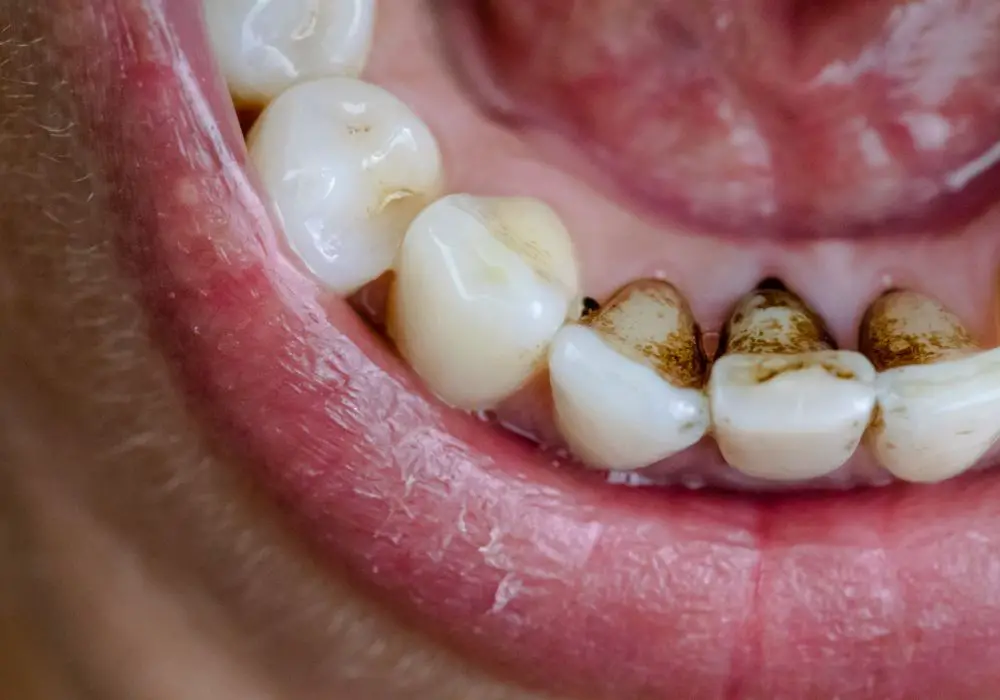
Removing unsightly stains between your teeth now is only half the battle. Taking steps to prevent discoloration from returning or worsening is vital:
- Brush twice and floss once daily to control plaque before it hardens into tartar.
- Drink potentially staining beverages like coffee through a straw to minimize contact with teeth.
- Rinse your mouth with water after consuming any food or drink that could discolor enamel.
- Limit consumption of sugary foods and drinks, since sugar feeds bacteria and enables plaque acids.
- See your dentist every 6 months for a professional cleaning and early cavity detection.
- Use teeth-strengthening fluoride toothpaste and collagen-boosting mouthwash.
- Have deteriorating dental work like fillings or crowns replaced to eliminate potential stain traps.
With diligent daily habits and regular dental visits, you can keep the spaces between your teeth looking clean and bright. Promptly address any suspicious spots that could indicate decay. But in many cases, vigilance will prevent harmless stains from taking hold in the first place.
Frequently Asked Questions
How can I whiten teeth naturally at home?
Some home remedies may help gently lift surface stains between teeth. Make a paste with baking soda and water and brush gently. Use hydrogen peroxide as a 30-second mouth rinse, but do not swallow it. You can also try rubbing strawberries or crushed oranges on teeth. Results will be subtle, however, and home remedies are not substitutes for professional whitening.
Will charcoal powder really whiten my teeth?
Charcoal has recently gained popularity for whitening, but proceed with caution. Early studies show it may be mildly abrasive enough to remove some surface stains, but long-term safety is unproven. Talk to your dentist before trying charcoal, as too much abrasion can damage enamel. Don’t use charcoal more than once or twice per week at most.
Why do my crowns stain faster than my natural teeth?
The outer layer of porcelain crowns is more porous than protective tooth enamel. This enables crowns to trap extrinsic stains over time, especially at the edges near your gums. Visit your dentist regularly so they can clean crowns thoroughly to prevent buildup. They may recommend replacing a crown if stains and gaps along the gumline cannot be managed.
My dentures have black spots – what’s the best way to clean them?
Soaking dentures overnight in antibacterial solution helps kill odor-causing bacteria and loosen debris. Hand soap or diluted bleach can also be used. Avoid vigorous scrubbing, but use a soft brush and denture toothpaste to gently remove stubborn stains. See your dententist regularly to ensure dentures still fit snugly, since looseness promotes more staining.
Why do my teeth look so stained after having braces?
The brackets, wires and other hardware of braces makes flossing and brushing more difficult. This allows plaque and stains to readily build up around brackets. Maintain diligent oral hygiene while undergoing orthodontic treatment. Consider more frequent professional cleanings as well to remove staining. Ask your orthodontist about whitening gel options to use in your trays.


